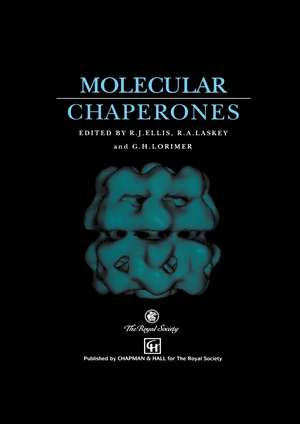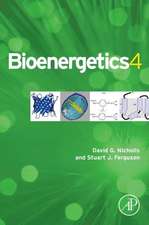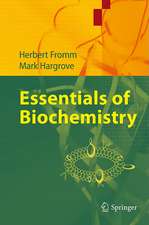Molecular Chaperones
Editat de R. J. Ellis, R. a. Laskey, G.H. Lorimeren Limba Engleză Hardback – 30 sep 1993
| Toate formatele și edițiile | Preț | Express |
|---|---|---|
| Paperback (1) | 942.01 lei 43-57 zile | |
| SPRINGER NETHERLANDS – 6 noi 2012 | 942.01 lei 43-57 zile | |
| Hardback (1) | 789.54 lei 38-44 zile | |
| SPRINGER NETHERLANDS – 30 sep 1993 | 789.54 lei 38-44 zile |
Preț: 789.54 lei
Preț vechi: 1038.86 lei
-24% Nou
Puncte Express: 1184
Preț estimativ în valută:
151.12€ • 155.73$ • 127.58£
151.12€ • 155.73$ • 127.58£
Carte tipărită la comandă
Livrare economică 26 februarie-04 martie
Preluare comenzi: 021 569.72.76
Specificații
ISBN-13: 9780412550607
ISBN-10: 0412550601
Pagini: 121
Ilustrații: IX, 121 p.
Dimensiuni: 210 x 297 x 13 mm
Ediția:1993
Editura: SPRINGER NETHERLANDS
Colecția Springer
Locul publicării:Dordrecht, Netherlands
ISBN-10: 0412550601
Pagini: 121
Ilustrații: IX, 121 p.
Dimensiuni: 210 x 297 x 13 mm
Ediția:1993
Editura: SPRINGER NETHERLANDS
Colecția Springer
Locul publicării:Dordrecht, Netherlands
Public țintă
ResearchCuprins
1 The general concept of molecular chaperones.- 2 The role of nucleoplasmin in chromatin assembly and disassembly.- Discussion: S. Lindquist, A. Horwich, N. W. Green, M.-J. Gething, W. Neupert, R. J. Ellis.- 3 The Escherichia coli chaperones involved in DNA replication.- Discussion: R. Jaenicke, M.-J. Gething, R. J. Ellis.- 4 The role of heat-shock proteins in thermotolerance.- Discussion: P. Viitanen, R. Jaenicke, A. Horwich, F.-U. Hard, R. J. Ellis, W. J. Welch.- 5 What does protein refolding in vitro tell us about protein folding in the cell?.- Discussion: A. R. Clarke, F.-U. Hard, G. H. Lorimer, R. J. Ellis, P. Viitanen.- 6 Chaperonins and protein folding: unity and disunity of mechanisms.- Discussion: N. C. Price, R. Jaenicke, F.-U. Hard, R. B. Freedman, M. Yoshida, W. J. Welch, B. O’Hara.- 7 A chaperonin from a thermophilic bacterium, Thermus thermophilus.- Discussion: G. H. Lorimer, R. Jaenicke, P. Viitanen, H. Saibil.- 8 Protein folding in the cell: functions of two families of molecular chaperone, hsp 60 and TF55-TCP1.- Discussion: N. J. Cowan, P. Viitanen, P. Mickletheaite, M.-J. Gething, H. Saibil, R. Jaenicke, C. Georgopoulos, F.-U. Hard, K. Willison.- 9 Heat shock proteins functioning as molecular chaperones: their roles in normal and stressed cells.- Discussion: M.-J. Gething, A. R. Clarke, P. Viitanen, P. Lund, I. G. Haas, C. Georgopoulos.- 10 The role of molecular chaperones in protein transport into the endoplasmic reticulum.- Discussion: S. Lindquist, W. J. Welch, P. Viitanen, G. H. Lorimer.- 11 Recognition of ligands by SecB, a molecular chaperone involved in bacterial protein export.- Discussion: J. Murphy, P. Lund, W. J. Welch, P. Viitanen, R. Jaenicke, F.-U. Hartl, T. E. Creighton, R. A. Laskey, G. H. Lorimer.- 12 Roles of molecular chaperones inprotein targeting to mitochondria.- Discussion: W. J. Welch, A. Baker, M.-J. Gething, R. Jaenicke.- 13 Molecular chaperones and the immune response.- Discussion: W. J. Welch, M.-J. Gething, P. Lund, A. R. Coates, I. G. Haas, P. Viitanen.- 14 Tumour suppressor genes and molecular chaperones.- Discussion: W. J. Welch, P. Viitanen, G. H. Lorimer, M. Zylicz, M. F. Perutz116.








